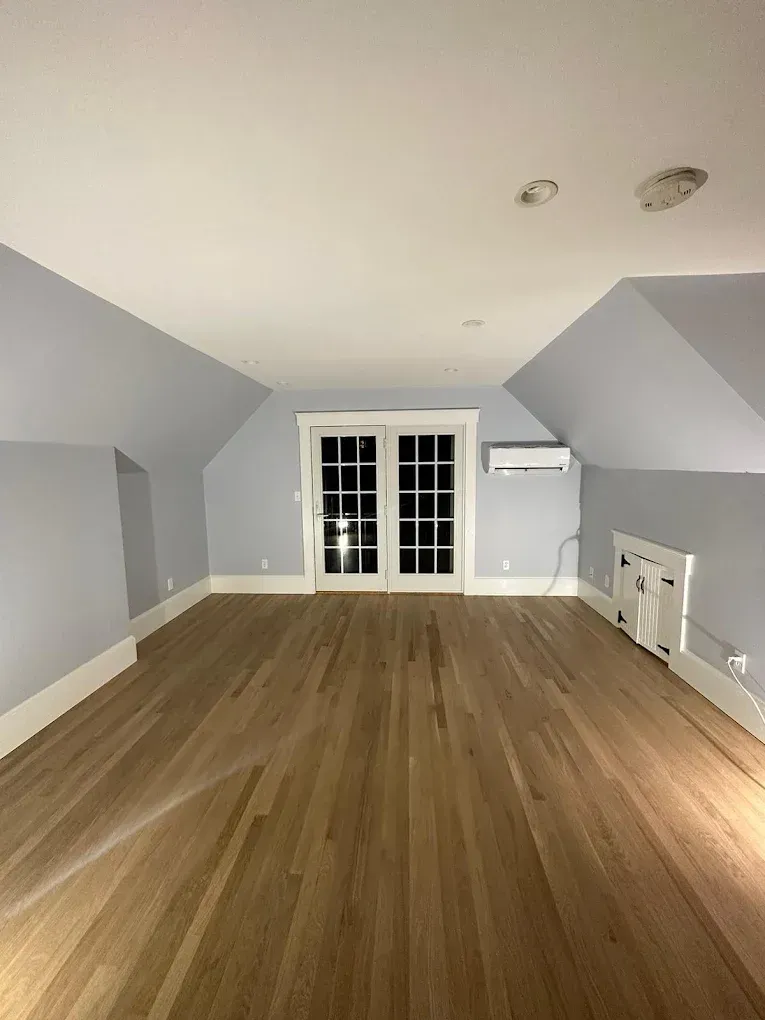
Do you need to prime before painting? Guide for painters
Painting is often seen as a straightforward job, but the question of whether to prime first can be puzzling. While it might seem like an extra step, applying primer is often crucial for a professional, long-lasting finish. Understanding what primer does and when it's necessary can save you time, effort, and money in the long run.
What primer does: seals, hides stains, promotes adhesion
Primer is a foundational coating that acts as a bridge between the surface and the topcoat of paint. It performs several vital functions:
Seals Porous Surfaces: Materials like new drywall, bare wood, and plaster are highly porous. Primer seals these surfaces, preventing them from "drinking up" your topcoat paint, which would lead to uneven absorption and a splotchy finish. It also helps achieve true color more quickly.
Hides Stains and Imperfections: Primer acts as a barrier, preventing stains (water stains, smoke, grease, previous dark colors) from bleeding through your new paint. Some primers are specifically formulated as stain-blocking primers. It also helps to smooth out minor imperfections, creating a more uniform canvas.
Promotes Adhesion: Primer creates a stable, slightly "sticky" surface that paint can bond to effectively. This is especially important on slick, glossy, or difficult-to-adhere-to surfaces, ensuring your paint doesn't peel, chip, or flake prematurely.
Situations requiring primer
You'll almost always need a primer in these scenarios:
New drywall or patched walls
New Drywall: Fresh drywall is incredibly porous and will absorb paint unevenly without a primer. A dedicated drywall primer-sealer is essential to create a uniform surface.
Patched Walls: If you've patched holes or cracks with spackle or joint compound, those areas will be more porous than the surrounding wall. Priming these patches (or the entire wall) ensures a consistent finish, preventing "flashing" (where the patched areas show through as dull spots).
Bare wood or glossy surfaces
Bare Wood: Wood contains tannins and resins that can bleed through paint, causing yellowing or discoloration. A stain-blocking primer (often shellac-based or oil-based) is crucial for bare wood.
Glossy Surfaces: Paint has trouble adhering to slick surfaces like glossy trim, cabinets, or previously high-gloss painted walls. A bonding primer is designed to stick to these challenging surfaces, providing a foundation for your topcoat. Lightly sanding the glossy surface before priming also helps adhesion.
Dramatic color changes
Going from Dark to Light: If you're painting a dark wall a much lighter color, a white or gray-tinted primer will save you multiple coats of expensive topcoat paint. It helps to neutralize the old color.
Painting Over Bold Colors: Even if going from one bold color to another, a primer can help ensure the true hue of your new paint comes through without being influenced by the underlying color.
When you can skip it: same sheen/color, well-prepped walls
You might be able to skip primer in these specific cases:
Same Sheen and Similar Color: If you're repainting walls that are in good condition, are relatively clean, and you're using a similar color and sheen to the existing paint, you can often go straight to painting.
Well-Prepped Walls: If your walls are clean, dull (not glossy), and free of stains or significant patches, they might be ready for direct painting.
High-Quality Paint-and-Primer-in-One Products: While not a true substitute for dedicated primer in challenging situations, these products can suffice for minor color changes on well-maintained surfaces.
Best primer types: drywall, wood, masonry
Different surfaces call for different primers:
Drywall Primer/Sealer: Specifically designed for new drywall, sealing porous surfaces and creating a uniform finish.
Wood Primer: Often oil-based or shellac-based to block tannins and resins, especially for bare wood.
Masonry Primer: Formulated to seal porous concrete, brick, and stucco, and to resist alkalinity and efflorescence (white powdery deposits).
Bonding Primer: Designed for difficult, glossy, or non-porous surfaces like laminate, metal, or previously high-gloss paint.
Stain-Blocking Primer: Available in water-based, oil-based, and shellac-based formulas. Shellac-based is often considered the best for severe water, smoke, or grease stains.
Tips: DIY vs paint-and-primer-in-one
DIYers: For most DIY projects, especially if you're unsure, using a dedicated primer is a safer bet for a professional result. It adds a step but often saves coats of paint and frustration.
Paint-and-Primer-in-One: These products combine some priming capabilities with the topcoat. They are best used on surfaces that are already clean, properly prepped, and when making a slight color change. They are not a true replacement for a dedicated primer when dealing with bare surfaces, stains, or dramatic color shifts. Think of them as high-quality paints with enhanced adhesion.
Avoid common mistakes & save paint
Not Cleaning Surfaces: Any dirt, grease, or grime will prevent primer (and paint) from adhering. Always clean thoroughly.
Skipping Sanding on Glossy Surfaces: Primer needs something to grip. A quick scuff sand is vital on shiny surfaces.
Not Allowing Proper Drying Time: Applying paint over wet primer will lead to adhesion issues. Always follow manufacturer's drying instructions.
Using the Wrong Primer: Using a drywall primer on bare wood, for instance, won't block stains. Match the primer to the surface and its challenges.
By using the right primer when necessary, you'll ensure your paint adheres beautifully, your colors appear true, and your professional-looking finish lasts for years.